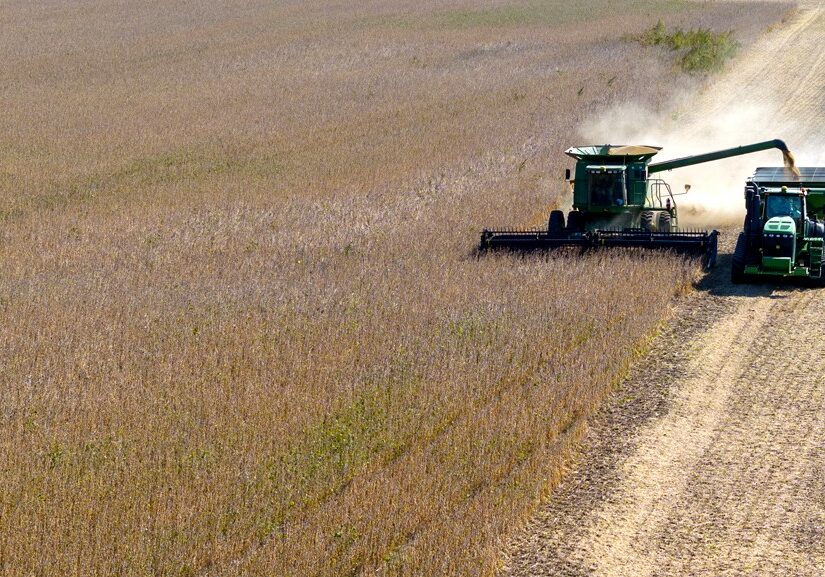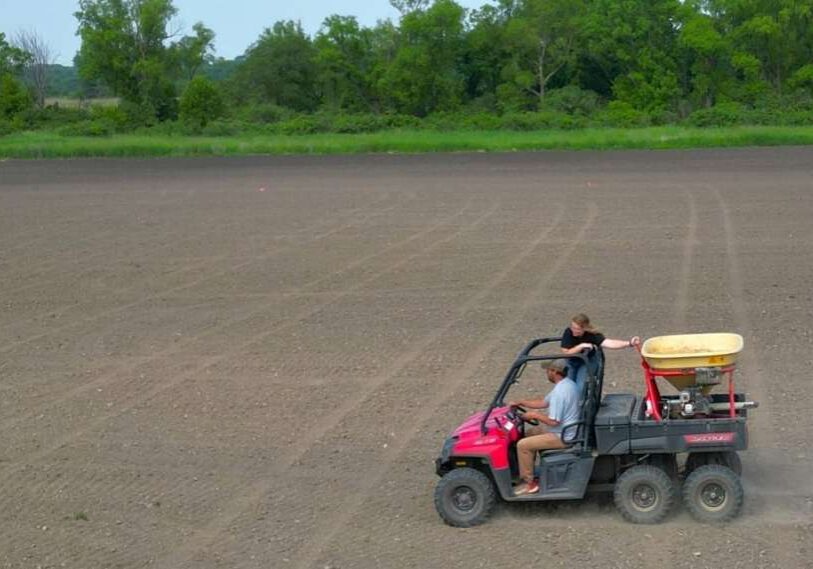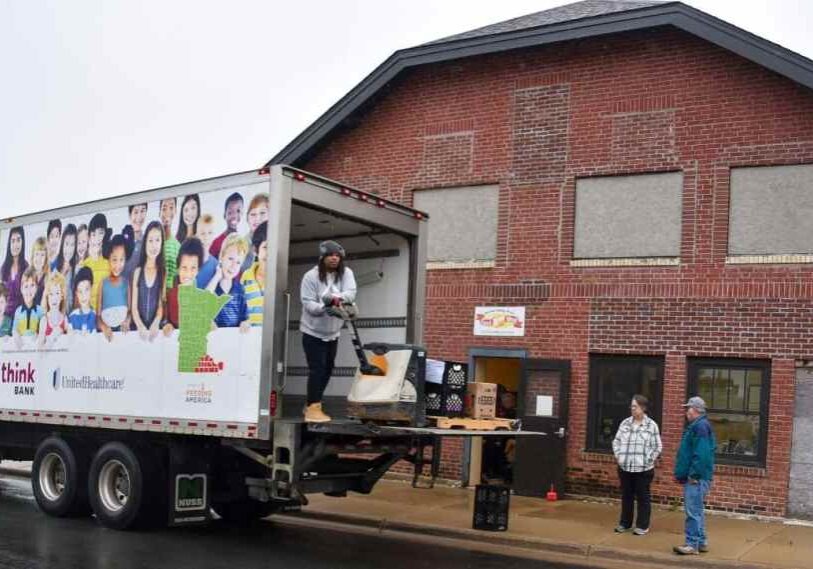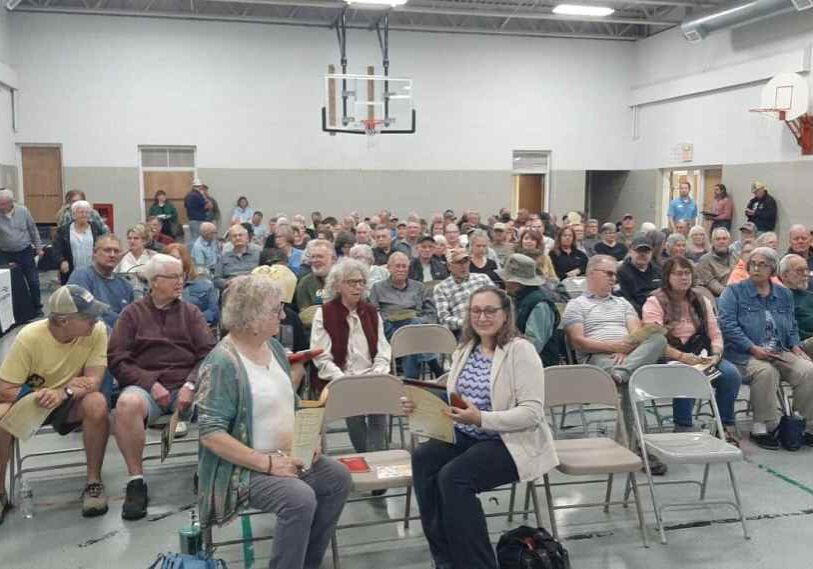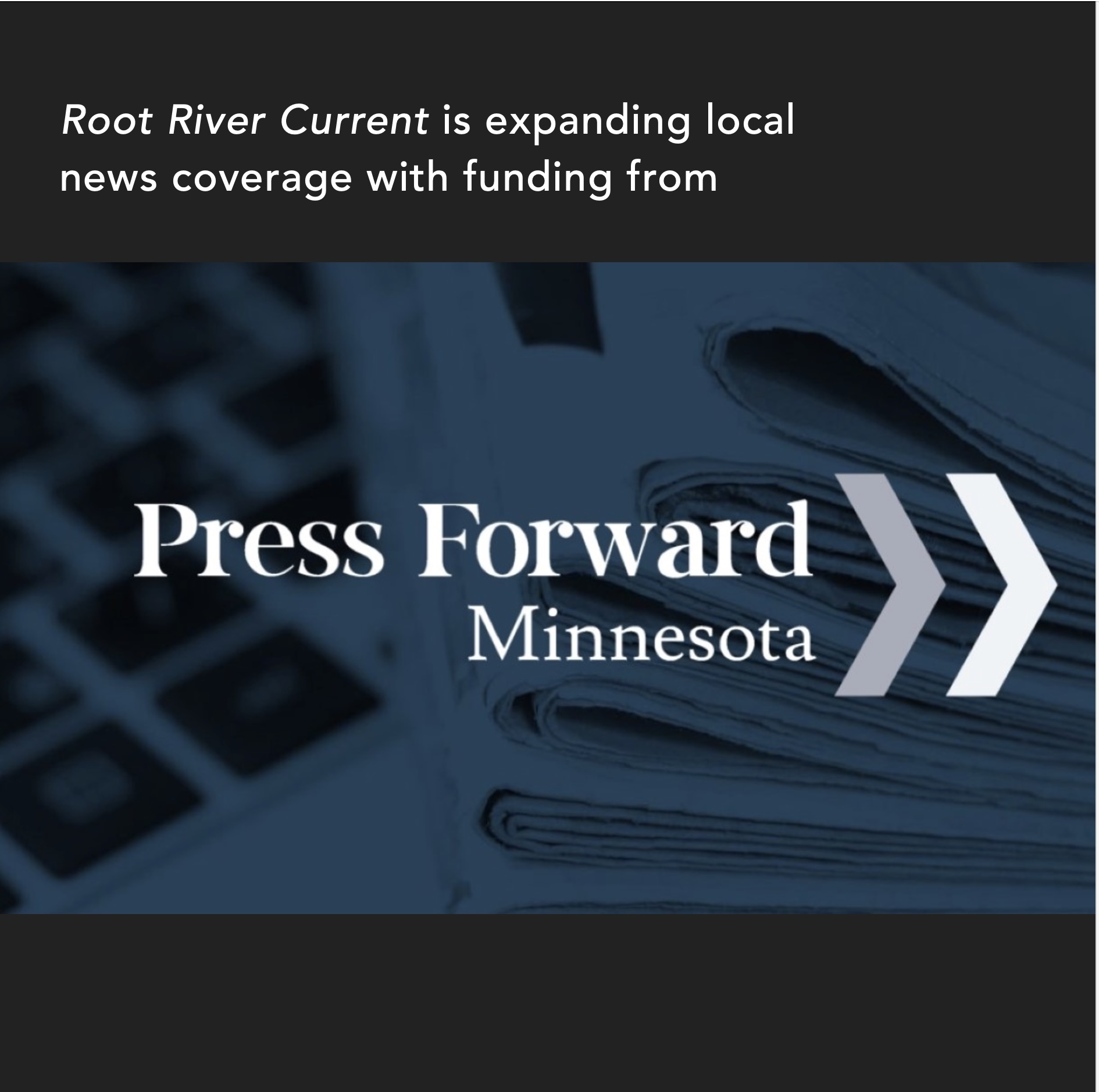Flying into Fillmore County Airport
Recent improvements make Fillmore County Airport a frequent stop-over for pilots

FOUNTAIN TOWNSHIP, FILLMORE COUNTY – A common theme in rural life is collaboration: being able to take organic ideas and find a way to make them a reality together. The creation and operation of the Fillmore County Airport is a testament to collaboration between local private pilots, landowners and Fillmore County government.
Located just south of State Highway 16, four miles west of Preston, the airport’s paved runway runs east-west for some 4000 feet, serviced by a variety of hangers, an administration building and many of today’s latest modern technologies and conveniences. But it wasn’t always that way.
The Fillmore County Airport began in 1968 when 58.9 acres was deeded to the County by Clifford and Marie Glaser. More and more land was added over the years, with additional land donated by Robert and Alma Gray, and more from the Glasers.
From 1968-1975, the airport only had a grass landing strip. A local airport committee, consisting of LaVerne Knoepke, Gordon Kimber and Donald Eichkoff, led the development of this grass landing strip. The official opening of the Fillmore County Airport was in 1975, when the runway was paved.
From the Navy to private pilot
Integral to the early success of the Fillmore County Airport was Preston resident Henry Brand. Henry was a World War II and Korean Conflict veteran and served as a Navy electrician on aircraft carriers. Because of his service in the Navy, he developed an interest in aviation and took flying lessons at the Fillmore County Airport to obtain his pilot’s license in the early 1970s.

Henry Brand, ready to fly with the crew of vintage WWII plane, Diamond Lil, a 1941 B-24 Liberator.
(Photo submitted by Cindy Brodhun)
Brand and six other people interested in flying formed the Fillmore County Flying Club in 1970. Their goal was to make the dream of learning how to fly more affordable for Fillmore County residents. In August 1970, the group purchased a Cherokee 140 airplane, and in September that year, they recruited a flight instructor, Frank Ahlman, to come to the Fillmore County Airport.
They built their first hangar in 1971, and by June 1972, they purchased a second plane, a Cherokee 180.
Taking flight skills and passion to England
Henry and his wife, Lois, wintered in Harlington, Texas, which happened to be the headquarters for the Commemorative Air Force, a non-profit whose mission is to restore and fly World War II airplanes. Henry joined, began working on those airplanes in the winter months, and soon developed a passion for them.

The five-member crew, including Preston aviator, Henry Brand (center in back row) in the Spring of 1992 and they get ready to fly Diamond Lil from the United States to England to commemorate 50 years since the US Eighth Air Force landed in England to help in the war effort. (Photo submitted by Cindy Brodhun)
When Henry learned how to fly airplanes in Preston, he probably didn’t think one day he would fly across the ocean to England. But in 1992, he, along with four others, took the B-24 Liberator named Diamond Lil from Texas to Minneapolis to Iqaluit, Canada, then to Reykjavik and finally landed in Scotland before being escorted into England by the Royal Air Force.
Cindy Brand Brodhun, Henry’s daughter, shared, “Dad served as an engineer on the flight and had to put in money of his own to fly this plane, and he also wrote lots of letters and grants to get sponsorships. They wore layers to stay warm as there was no insulation in the plane.”

Henry Brand’s daughter Cindy, with her husband, daughter, son-in-law and grandchildren at the Rochester International Airport in front of the Diamond Lil in 2023. From left to right: Mark Brodhun, Charlotte Florek, Mercy Florek, Cindy (Brand) Brodhun, Henry Florek, Kristi Florek, and Matt Florek. (Photo submitted by Cindy Brodhun)
Cindy has many memories growing up in Preston and flying from the Fillmore County Airport often. They would fly to visit friends in college or go to a family member’s cabin at Shell Lake. One flight they took to visit her brother in North Dakota resulted in a short stay because the weather was turning. They ate as quickly as they could and had to leave.
“I had to watch the wings for ice accumulation, as that can change the weight of the plane and its aerodynamics,” Cindy said. Henry Brand would be proud to know his granddaughter, Linnea, is taking on aviation for the family as she is a member of the Junior Civil Air Patrol.

A new terminal building at the Fillmore County Airport was completed in 2024. Photo by Alison Leathers.
(Photo by Alison Leathers)
Historical improvements over the years
Fillmore County has done many improvements to the airport over the years. In aeronautical lingo, the airport is referred to as a Fixed-Based Operator (FBO), which means the airport provides services such as refueling and a terminal building.
The airport-built hangars and a building for Isaac Deters, the airport’s current independent contractor, who provides many services including flight training and flight services as well as inspections and body work.

Fueling system at Fillmore County Airport. (Photo by Alison Leathers)
The next major updates in the airport’s history were adding a fuel system and upgrading the lighting in 2013. In 2017-2018, a master plan was created along with new asphalt paving of the 4,001 feet runway.
In 2020, an eight-unit hangar was built and the Automated Weather Observing System (AWOS) system was upgraded, making the Fillmore County Airport one of the first airports in the state to implement this system upgrade as required by the State of Minnesota. This system collects data such as wind-speed and visibility and then disseminates the data to pilots through telephone reports or voice broadcasts, so they can make informed decisions when flying.
Bipartisan work benefits Fillmore County
The most recent upgrade to the Fillmore County Airport is the new terminal building, which began construction in March 2023 and was completed in January 2024.
Pam Schroeder, Fillmore County Highway/Airport Office Manager, applied for a grant through the Bipartisan Infrastructure Investment and Jobs Act legislation from 2021, which provided one billion dollars annually for five years, specifically for airport terminal grants. This grant was highly competitive, as airport terminal grant applicants asked for 650 billion dollars that first year when only one billion dollars was awarded.
Fillmore County had to answer the question, “How can this enhance your community and spark some funds into the county?” The grant writing from Fillmore County was successful as they were awarded one million dollars, and of 89 airports awarded grant funds that year, only about six were airports similar to the Fillmore County Airport.
Fillmore County also successfully obtained funding from the Federal Aviation Administration (FAA) Airport Infrastructure Grants and through the Minnesota Department of Transportation’s Aeronautics funding. Through these multiple revenue sources, Fillmore County’s share of the Terminal Building project was only about $50,000.
“This was a project that kept us under the gun daily,” Schroeder stated. “We had daily meetings and design meetings, and it was lots of work to send everything in for the FAA to approve it.” She further shared, “There were lots of hoops to jump through, but we did it and started construction.”

Lounge and public viewing area in the terminal building at the Fillmore County Airport. (Photo by Alison Leathers)
The Terminal Building project wasn’t without its challenges. With the project involving both the FAA and Minnesota Department of Transportation (MNDOT), working together with Fillmore County, the project had, “to be just so,” Schroeder said.
“The whole project had to use around 65% American vendors, and at the time we were struggling to find certain vendors during COVID. But we found things little by little, and we came along. The state helped with issues,” she acknowledged.
There were many unknowns with the project, such as making sure the building was in the perfect spot based on FAA specifications.
These challenges were worth overcoming as the airport now has an added amenity in the Terminal Building that is projected to more than double the airport’s revenue since putting in the upgraded fuel system in 2013.
“It is welcoming and so much more comfortable for pilots to stretch their legs after flying for a while,” Shroeder explained. “We have seen a lot of repeat customers with the terminal building.”
An important county asset
Many private pilots utilize the airport each year, from flying in for business or real estate transactions to coming in for family events such as baby showers or funerals or tourists visiting Forestville State Park or the Minnesota Veterans’ Cemetery.
The airport is also utilized by Mayo Clinic helicopters for medical emergencies and by the National Guard to do training exercises. As witnessed in the terminal’s logbook, it is also a stopover for pilots who are on their way to other locations, such as a pilot who was recently travelling from Arkansas to Two Harbors, Minn.

A newly added pilot’s briefing room gives pilots and visitors space to rest, check the weather and log into their computers.
(Photo by Alison Leathers)
The new terminal building includes a pilot’s briefing room for hanging out, resting or using a computer; a lounge with a refrigerator, couch and counter seating that doubles as a public viewing area. One great service the Fillmore County Airport provides is a courtesy car that pilots and visitors can use to run into town for a bite to eat or a short sightseeing trip.
As local pilot Joe Lafreniere explained, “It is nice being a local and having the convenience of the Fillmore County Airport to get my pilot’s license, store my plane and be able to take off to nearby locations.” He said the new terminal building is “a big improvement” to the Fillmore County Airport.
Lafreniere is a Preston business owner and lives outside Harmony. On a recent mid-April day, he was ready to take off with his black lab to see if any area farmers were out getting ready for planting season.
It is evident he is grateful for the Fillmore County Airport and the accessibility it provides for those interested and active in aviation.
A pilot’s perspective
Nathan Hyland, a private pilot living in Phoenix, Ariz., has gotten to know the Fillmore County Airport well since getting his pilot’s license in the Spring of 2022. A mutual friend earned his license, so it sparked an interest in him and his friends to pursue getting their licenses.
Hyland realized that you don’t need to be a millionaire to be a pilot, so he got his license in about three months and then got his instrument license, which he uses primarily when flying over the Midwest due to the more frequent cloud cover as compared to Arizona. His spouse, Anna Hyland, is from Preston, so they come back to the Midwest often to visit Anna’s family and enjoy bluff country’s outdoor recreation opportunities, like deer hunting and fishing.

Cat Charlie, Anna Hyland, and Nathan Hyland pose for a selfie during one of many flights from Phoenix to Preston.
(Photo by Nathan Hyland)
The Hylands own a 1979 Mooney M20K 231 aircraft. They usually travel and utilize larger airports that have terminals and major airlines in California, Utah, Texas and other states. “The Fillmore County Airport is a totally different experience where you get to meet people and make friends. This is not something that could happen at the larger airports we use,” Nathan said.
He and Anna really enjoy the new Terminal Building, especially since both work remotely, and they can use the Pilot’s Briefing Room for virtual meetings.
It takes them six and half hours with one fuel stop to get from Phoenix to Preston. This is a shorter amount of time than taking a commercial flight from Phoenix to Minneapolis-St. Paul with the driving and security time added in.
Preparation for each flight begins by looking at the weather every day for about a week prior to departure, and this helps him plan the timing and route for optimization, while considering winds and altitude. Because their cat Charlie often flies with them, they keep their flights at around 11,000 feet.
As they fly around, they tell others, especially pilots who they meet at the annual Oshkosh, Wis., air show, about the Fillmore County Airport and its amenities.
Experience the Fillmore County Airport
Every August, a Fly-In Drive-In Breakfast is held at the Fillmore County Airport. It is an opportunity for pilots to fly-in and have breakfast while the public can drive-in and view various aircraft and get to experience the Fillmore County Airport.
The Fillmore County Airport has meant so much to so many families since its opening. When Cindy Brand Brodhun was asked what the Fillmore County Airport means to her, she stated, “My dad and our family would be so amazed and proud of the growth and expansion of the Fillmore County Airport. It’s wonderful to see all the improvements, the beautiful new facility, and the wide variety of pilots, families, and businesses that utilize it. I’m also thankful that Mayo One can land here and transport patients quickly for treatment. Such an asset for Preston and Fillmore County!”
What started as an idea in the late 1960s from local residents and Fillmore County officials, has become a wonderful FBO for pilots from all over the United States.
The hard work from Fillmore County staff, like Pam Schroeder, with support from local pilots as well as state and federal government, has allowed the Fillmore County Airport to make improvements and thrive. Clearly, the theme of collaboration continues on at the Fillmore County Airport.
